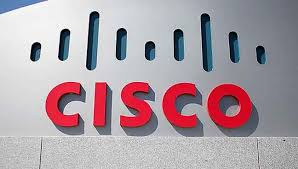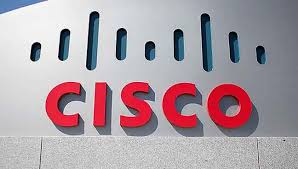
As we approach 2025, following what is likely to be the warmest year on record, the need to address our planet's interconnected challenges has become more pressing than ever. Climate change and resource scarcity demand coordinated efforts from businesses, governments, and communities to take deliberate, large-scale actions.
At Cisco, we remain committed to reducing environmental impact while fostering resilience, ensuring that ecosystems, industries, and communities can adapt and thrive in an uncertain future. Here are six sustainability trends anticipated to shape 2025:
1. Advancing Grid Modernization
The integration of artificial intelligence (AI) offers tremendous potential for societal progress but necessitates cleaner, more resilient energy sources and a rethinking of infrastructure. Preparing now enables us to balance the needs of a rapidly digitizing, AI-driven world with the imperative of maintaining a livable planet.
Modernizing energy grids is crucial to meet increasing demand and enhance energy security. In the U.S., much of the grid infrastructure is aging, with 70% of transmission lines over 25 years old. AI integration can revolutionize energy management, making systems more efficient and reliable.
Cisco is committed to future-proofing energy grids, buildings, networks, and data centers to accommodate evolving energy requirements. By leveraging expertise in secure networks, we are driving grid innovation that supports greater affordability and reliability across the energy sector.
2. Embracing the Circular Economy
Shifting from linear to circular business models is transforming industries by reducing waste and maximizing resources. However, much progress remains to be made. The UN Global E-waste Monitor reports that global e-waste reached 62 million tonnes in 2022, a figure projected to grow to 82 million tonnes by 2030.
Cisco leads the transition to a circular economy by embedding sustainability into product design and lifecycle strategies. Key initiatives include:
At Cisco, we remain committed to reducing environmental impact while fostering resilience, ensuring that ecosystems, industries, and communities can adapt and thrive in an uncertain future. Here are six sustainability trends anticipated to shape 2025:
1. Advancing Grid Modernization
The integration of artificial intelligence (AI) offers tremendous potential for societal progress but necessitates cleaner, more resilient energy sources and a rethinking of infrastructure. Preparing now enables us to balance the needs of a rapidly digitizing, AI-driven world with the imperative of maintaining a livable planet.
Modernizing energy grids is crucial to meet increasing demand and enhance energy security. In the U.S., much of the grid infrastructure is aging, with 70% of transmission lines over 25 years old. AI integration can revolutionize energy management, making systems more efficient and reliable.
Cisco is committed to future-proofing energy grids, buildings, networks, and data centers to accommodate evolving energy requirements. By leveraging expertise in secure networks, we are driving grid innovation that supports greater affordability and reliability across the energy sector.
2. Embracing the Circular Economy
Shifting from linear to circular business models is transforming industries by reducing waste and maximizing resources. However, much progress remains to be made. The UN Global E-waste Monitor reports that global e-waste reached 62 million tonnes in 2022, a figure projected to grow to 82 million tonnes by 2030.
Cisco leads the transition to a circular economy by embedding sustainability into product design and lifecycle strategies. Key initiatives include:
- Incorporating Circular Design Principles into 100% of new products and packaging by FY25 (currently at 96%).
- Programs like Cisco Takeback and Reuse and Cisco Refresh, which extend device lifecycles through remanufacturing, reuse, and recycling.
- Achieving near-total recycling or reuse of returned products.
These efforts not only advance Cisco's sustainability goals but also empower customers to adopt eco-friendly practices.
3. Driving Innovation
Innovation is pivotal in addressing environmental challenges. Annual investments in clean energy technology are expected to surpass $900 billion by 2030.
Cisco partners with early-stage startups focused on clean energy, circularity, and climate resilience. Through our Cisco Investments portfolio, companies like CorPower Ocean and DEScycle are leading transformative solutions.
Our commitment includes a $100 million investment over ten years by the Cisco Foundation to support climate innovation across nonprofits and for-profit startups.
4. Strengthening Public-Private Partnerships
Tackling environmental challenges requires collaboration across sectors. According to a 2023 World Economic Forum report, 87% of public-private-philanthropic partnerships target emerging economies that often lack the resources to address these issues independently.
In 2025, partnerships between governments, businesses, and local initiatives will play a critical role in driving sustainability. Collaborative efforts can bring together policies, funding, and innovations needed for impactful change.
5. Addressing Nuclear Energy and Water Insecurity
As global energy demands rise, nuclear energy is gaining renewed attention as a reliable, clean energy source. The International Atomic Energy Agency predicts a 2.5-fold increase in nuclear capacity by 2050, making it a key component of a diversified energy mix.
Water insecurity is also a growing concern, with over 1 billion people lacking access to clean water and 2.7 billion experiencing scarcity annually. With data centers powering AI reliant on significant water resources, 2025 is likely to see increased focus on innovative water management and equitable access.
6. Enhancing Community Resilience
Resilience involves not just overcoming challenges but adapting and thriving in the face of change. With 2.6 billion people still lacking internet access, technology plays a vital role in connecting communities and building resilience.
Cisco supports community resilience through secure digital networks, grid modernization, and innovative solutions designed to withstand climate risks. Stronger communities are better positioned to implement and sustain long-term sustainability initiatives.
Looking Ahead
At Cisco, sustainability extends beyond reducing environmental impact—it’s about building resilience to meet today’s challenges and tomorrow’s opportunities. In 2025, we aim to lead with purpose, scaling solutions to address climate risks while empowering communities to adapt and thrive.
Click here to know more about what Cisco has accomplished around sustainability.
3. Driving Innovation
Innovation is pivotal in addressing environmental challenges. Annual investments in clean energy technology are expected to surpass $900 billion by 2030.
Cisco partners with early-stage startups focused on clean energy, circularity, and climate resilience. Through our Cisco Investments portfolio, companies like CorPower Ocean and DEScycle are leading transformative solutions.
Our commitment includes a $100 million investment over ten years by the Cisco Foundation to support climate innovation across nonprofits and for-profit startups.
4. Strengthening Public-Private Partnerships
Tackling environmental challenges requires collaboration across sectors. According to a 2023 World Economic Forum report, 87% of public-private-philanthropic partnerships target emerging economies that often lack the resources to address these issues independently.
In 2025, partnerships between governments, businesses, and local initiatives will play a critical role in driving sustainability. Collaborative efforts can bring together policies, funding, and innovations needed for impactful change.
5. Addressing Nuclear Energy and Water Insecurity
As global energy demands rise, nuclear energy is gaining renewed attention as a reliable, clean energy source. The International Atomic Energy Agency predicts a 2.5-fold increase in nuclear capacity by 2050, making it a key component of a diversified energy mix.
Water insecurity is also a growing concern, with over 1 billion people lacking access to clean water and 2.7 billion experiencing scarcity annually. With data centers powering AI reliant on significant water resources, 2025 is likely to see increased focus on innovative water management and equitable access.
6. Enhancing Community Resilience
Resilience involves not just overcoming challenges but adapting and thriving in the face of change. With 2.6 billion people still lacking internet access, technology plays a vital role in connecting communities and building resilience.
Cisco supports community resilience through secure digital networks, grid modernization, and innovative solutions designed to withstand climate risks. Stronger communities are better positioned to implement and sustain long-term sustainability initiatives.
Looking Ahead
At Cisco, sustainability extends beyond reducing environmental impact—it’s about building resilience to meet today’s challenges and tomorrow’s opportunities. In 2025, we aim to lead with purpose, scaling solutions to address climate risks while empowering communities to adapt and thrive.
Click here to know more about what Cisco has accomplished around sustainability.


 Top 6 Sustainability Trends Shaping 2025
Top 6 Sustainability Trends Shaping 2025




 Companies
Companies